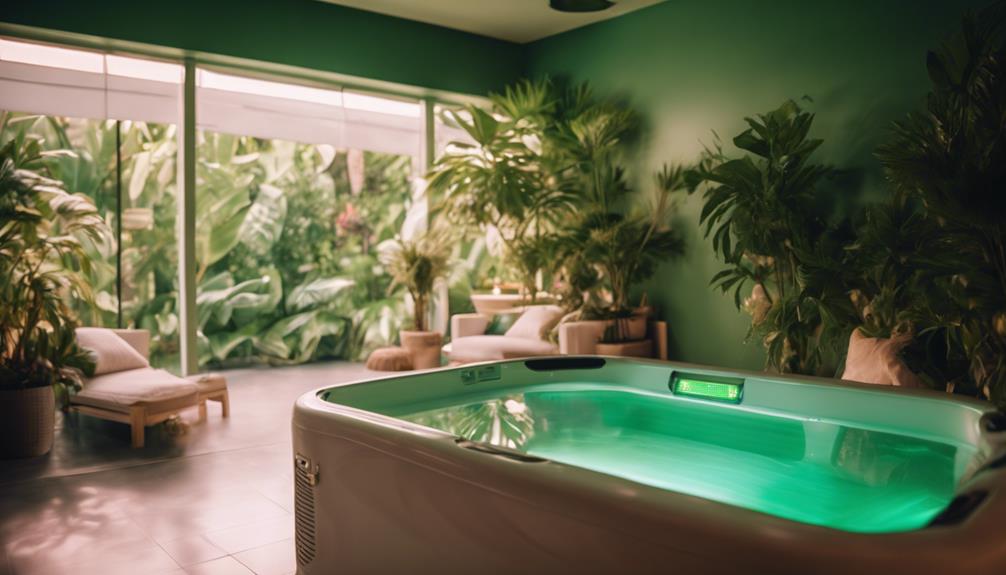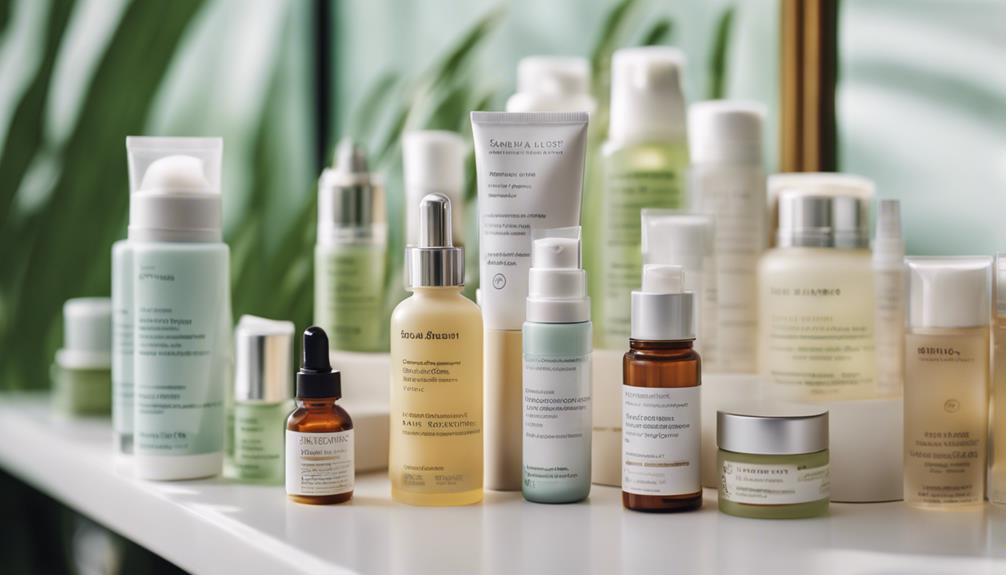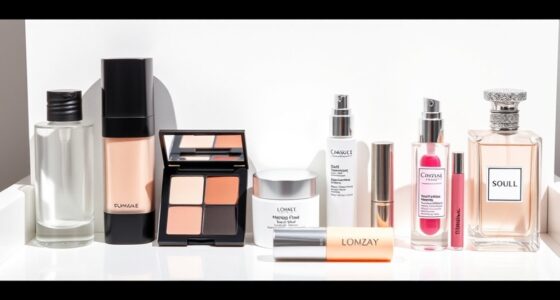Tanning beds can help you achieve the sun-kissed look you desire, but it is crucial to be aware of your limits! To begin with, take into account your skin type—fair skin only needs a few minutes, whereas darker skin can tolerate longer tanning sessions. Ease into the tanning process by starting slow, perhaps once a week, and observe how your skin responds. Always keep your skin hydrated and remember to apply a soothing lotion afterwards to maintain skin health. If you experience any redness or peeling, it’s time to take a break. Just like warming up before a game, your skin also needs to gradually adjust to tanning. Are you ready to glow safely? There is more to explore!
Key Takeaways
- Understand your skin type: Fair skin (Type 1) needs only 1-3 minutes, while darker skin (Type 5) can handle 4-10 minutes in tanning beds.
- Choose the right tanning bed level: Beginners should start with Level 1 for gentler UV exposure to avoid burns.
- Limit session frequency: Start slow, incorporate breaks, and listen to your skin's reactions to prevent overexposure.
- Monitor for signs of overexposure: Redness, peeling, and discomfort indicate you should stop tanning immediately to protect your skin.
Understanding Skin Types
Understanding your skin type is essential for safe tanning bed use, as it helps determine the right exposure time and minimizes the risk of burns.
Imagine your skin as a delicate flower; too much sun can wilt it!
If you've got Type 1 skin, with its porcelain glow, you should start with just 1-3 minutes.
On the other hand, if you're rocking Type 5, you could handle a solid 4-10 minutes!
It's all about knowing your limits.
Always begin with minimal exposure and pay close attention to how your skin reacts.
Think of it like a dance—you wouldn't jump straight into a spin without warming up first!
Tanning Bed Levels

Tanning beds come in various levels, each offering different UV outputs to match your experience and skin type.
Think of it like climbing a ladder! Level 1 is for beginners, with gentle UVA/UVB rays. If you're ready for a bit more, Level 2 provides a moderate mix for a deeper tan.
Level 3 is where the fun really begins, cranking up the intensity for those seasoned tanners! But watch out for Level 4—it's super powerful, and you'll want to use it with caution.
Frequency of Sessions
Choosing the right frequency of tanning bed sessions is just as important as selecting the right bed level for your skin type. You want that golden glow without risking your skin health, right?
Here's what to keep in mind:
- Start slow and listen to your skin.
- Limit sessions to avoid burns and damage.
- Take breaks between sessions for recovery.
Safety Precautions
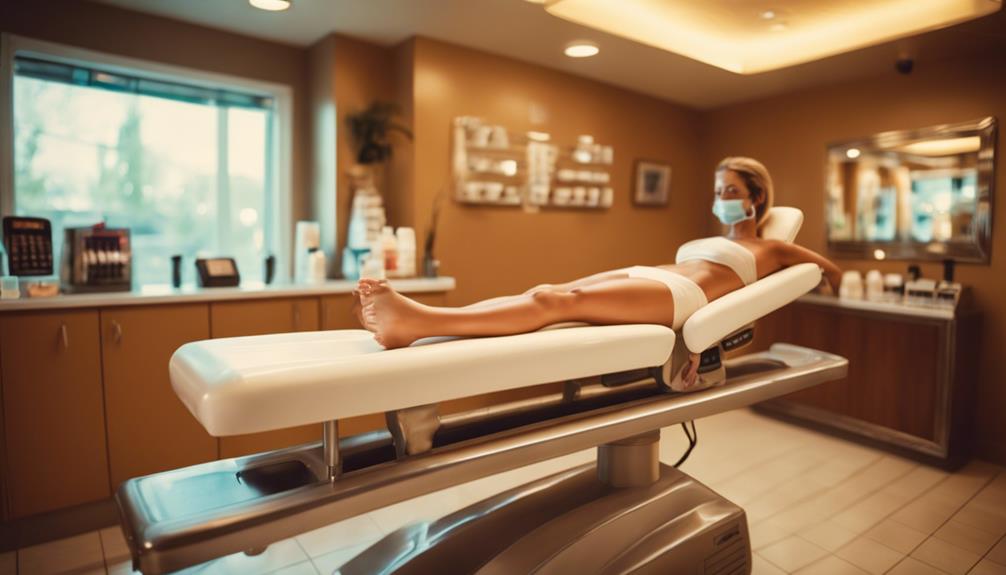
To guarantee a safe tanning experience, gradually increase your exposure time and always pay attention to how your skin reacts. Start with short sessions, especially if you've got fair skin, because nobody wants to look like a lobster!
Hydrate before and after tanning; your skin will thank you. Consider exfoliating a day before to help achieve that even glow, and skip the makeup—it's a tanning salon, not a beauty pageant!
If you're unsure, ask a professional for tips tailored just for you. Remember, it's all about balance—don't overdo it!
Think of tanning like a new video game; you wouldn't rush through the levels, right? Play it safe, and enjoy your glow!
Post-Tanning Skincare

After enjoying your tanning session, it's important to focus on effective post-tanning skincare to keep your skin hydrated and healthy. Think of your skin as a thirsty plant; it needs water and nutrients to thrive!
Here are some quick tips to help your skin recover:
- Apply a soothing lotion or aloe vera to lock in moisture.
- Hydrate with plenty of water to replenish your skin's moisture levels.
- Wear loose, breathable fabrics to let your skin breathe and recover.
Signs of Overexposure

Recognizing the signs of overexposure is essential for protecting your skin and ensuring a safe tanning experience. If your skin starts turning red, feeling tender, or even peeling like a sunburned potato, it's time to hit the brakes!
Blistering might show up too, which is definitely a sign to stop. Feeling dizzy or nauseous? That's your body's way of saying, “Hey, let's take it easy!”
Uneven skin color changes can also pop up, making you look like a patchwork quilt. So, before you end up looking like a lobster at the beach, listen to your skin.
Alternative Tanning Options
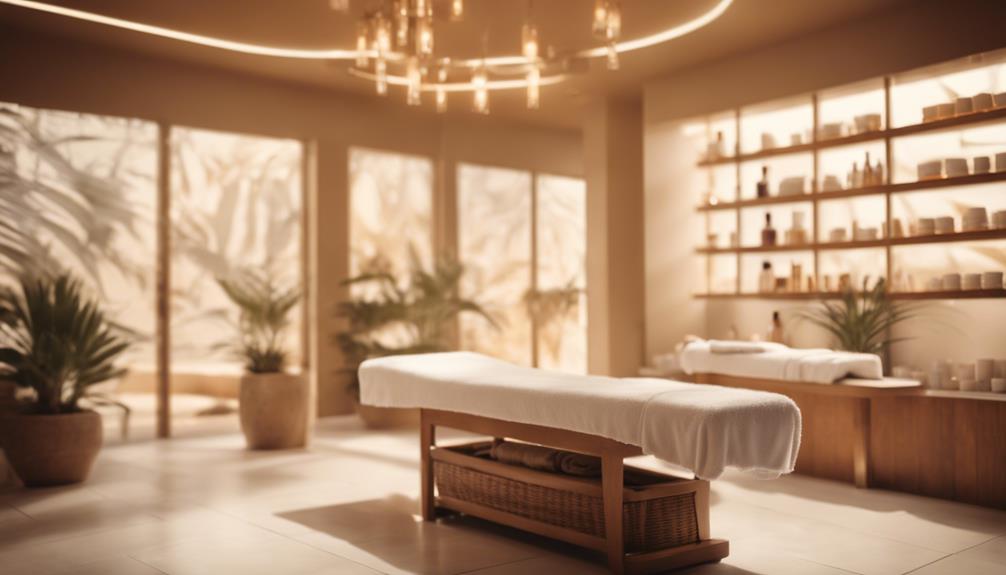
Exploring alternative tanning options can help you achieve a sun-kissed look without the risks associated with tanning beds. You can maintain a healthy glow while keeping your skin safe and sound!
Here are some fun alternatives to contemplate:
- Self-Tanning Lotions: Apply these for a gradual tan that develops over a few hours.
- Spray Tans: Get a professional spray tan for an instant, even glow.
- Tanning Wipes: Convenient and easy to use, just wipe on for a quick tan.
Frequently Asked Questions
Can I Tan if I Have Sensitive Skin?
If you've got sensitive skin, you can tan, but be cautious. Start with short sessions, monitor your skin's reaction, and consider alternative options like sunless tanners to avoid irritation and potential damage.
How Does Tanning Affect the Aging Process?
Tanning accelerates skin aging, causing wrinkles, fine lines, and loss of elasticity. It damages collagen and elastin fibers, making your skin appear older than it is. Prioritize protection and hydration to maintain a youthful look.
Are There Any Health Benefits to Tanning?
You might think tanning's a miracle cure, but it's not! While some claim it boosts mood or vitamin D, excessive exposure risks serious health issues. Focus on safer alternatives instead for that sun-kissed glow, alright?
Can Medications Impact My Tanning Experience?
Yes, certain medications can affect your tanning experience. They might increase sensitivity to UV rays or cause skin reactions. Always consult your doctor about potential interactions before using tanning beds to guarantee your skin stays healthy.
What Should I Do if I Get Sunburned?
If you've caught a bit too much sunshine, soothe your skin with aloe vera, stay hydrated, and wear comfy clothes. Rest up and let your skin heal; it'll thank you later!
What are the Limits of Tanning Bed Safety and How Can I Maximize my Tanning Experience within those Limits?
Tanning bed safety is crucial, so it’s essential to understand the limits. The key to maximize tanning bed experience is to follow manufacturer guidelines, limit sessions, and wear protective eyewear. Moisturizing before and after tanning can also help maximize results while minimizing potential risks.
Conclusion
So, as you immerse yourself in the world of tanning, remember this: about 90% of skin aging is caused by UV exposure, and you definitely want to keep your skin looking youthful!
By knowing your skin type, setting limits, and following safety precautions, you can enjoy that glow without the worry.
Think of tanning like baking a cake—you wouldn't just throw it in the oven and hope for the best!
Take your time, and your skin will thank you later!
